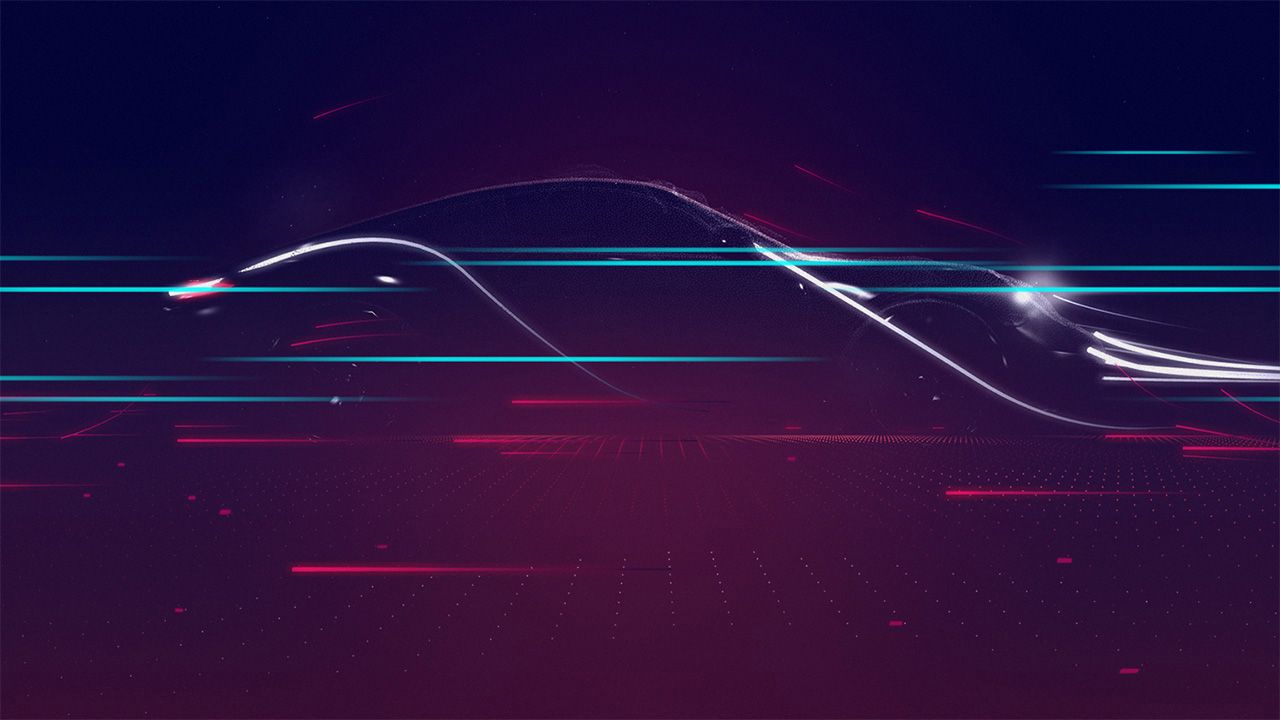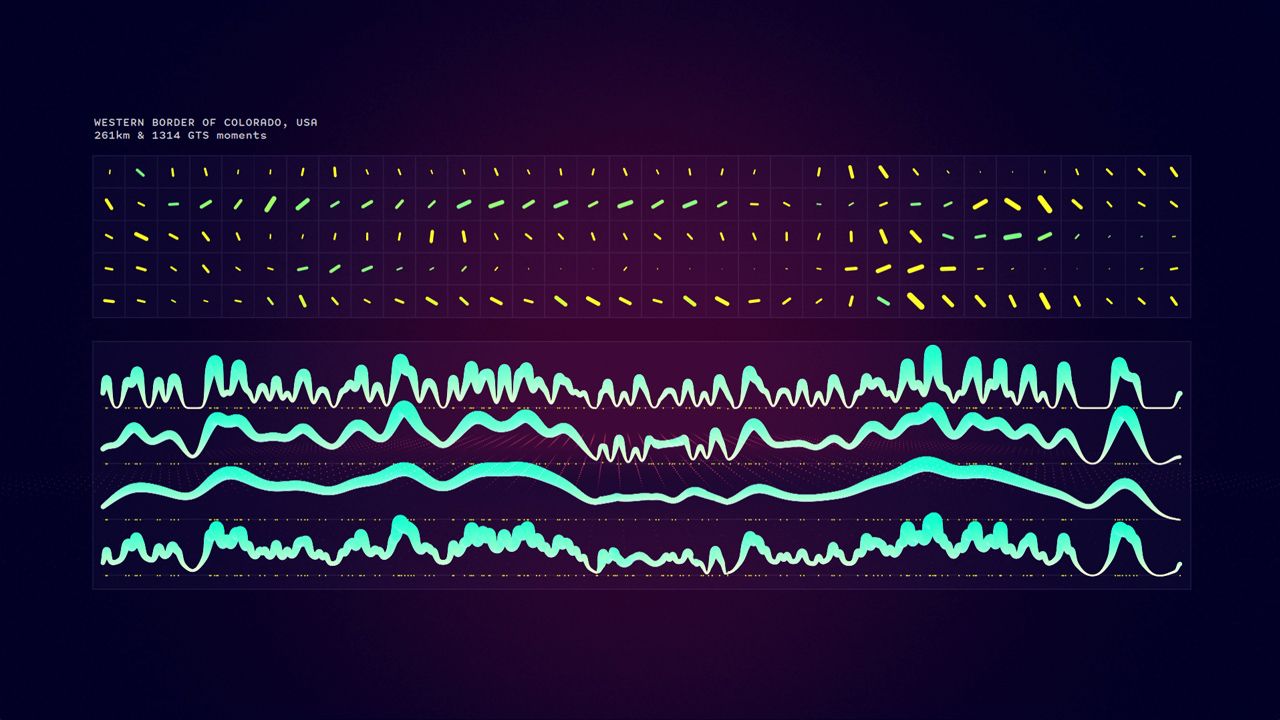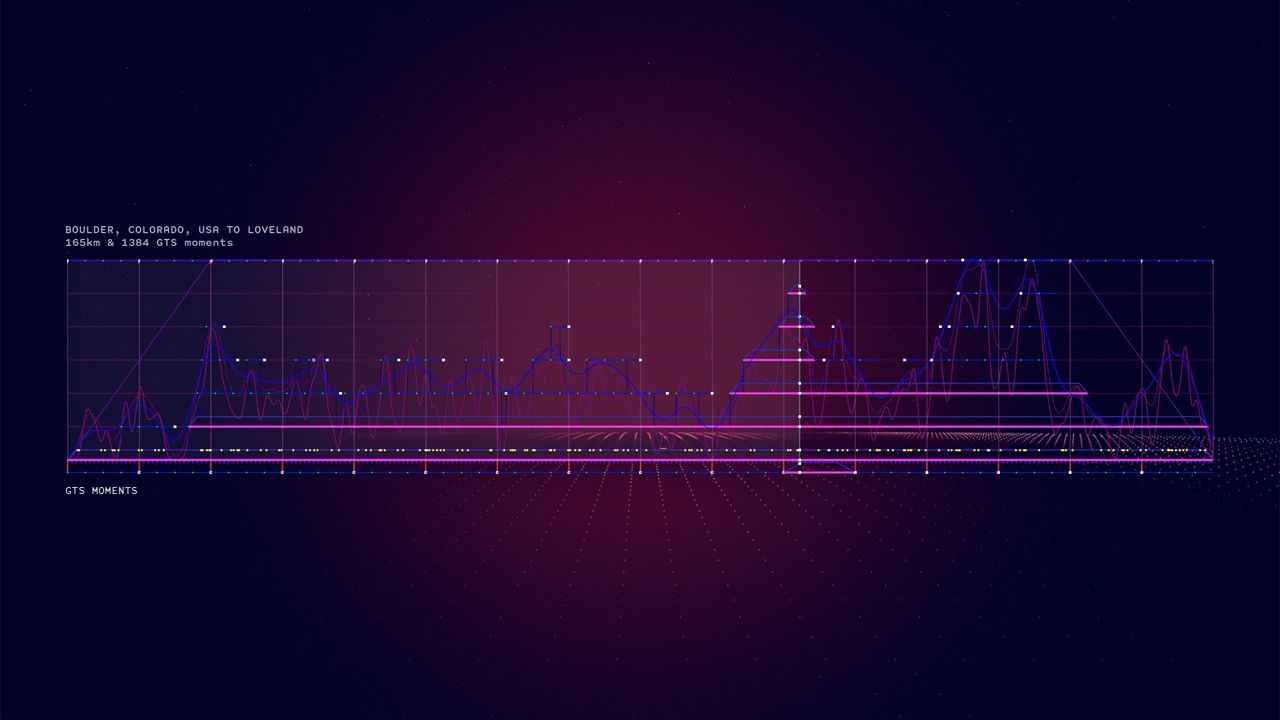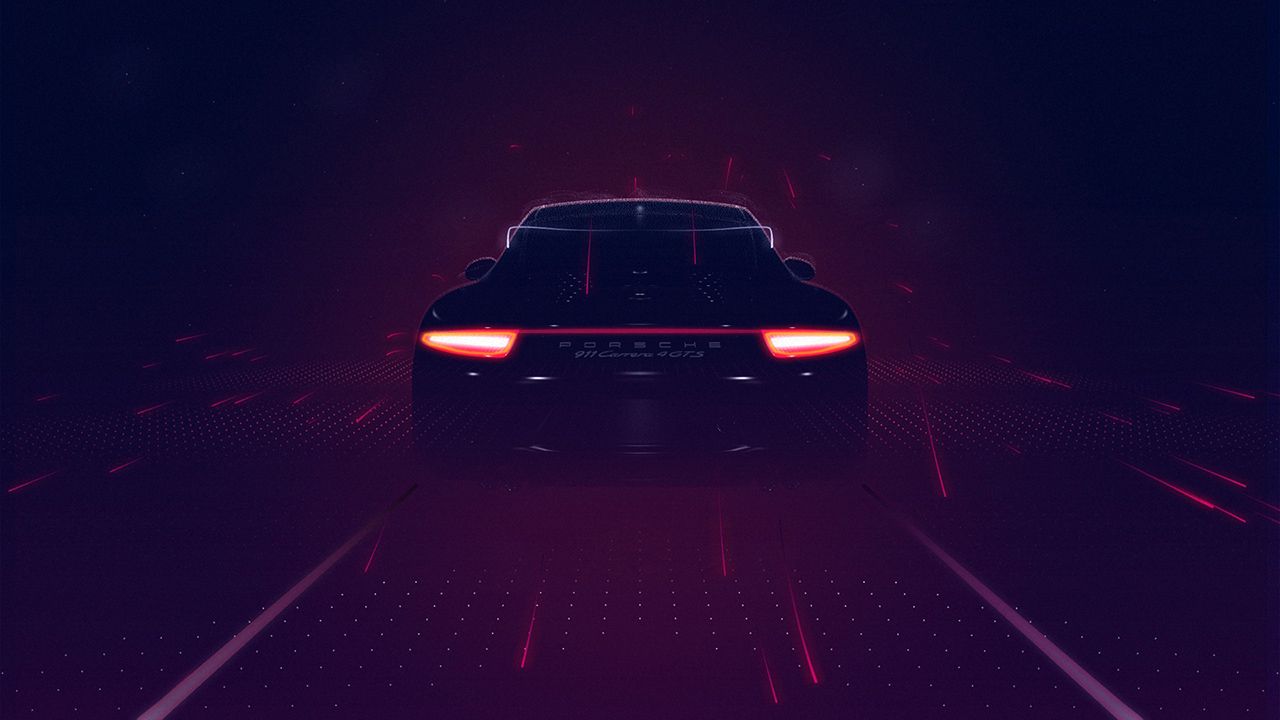With Generative Design embedded in the DNA of our work, we look back at a decade of deploying and evolving this powerful approach that has paved new ways for the creative design process – and continues to inspire today.

Particles and fragments of light slip by in a stream of time and space to portray the compelling experience of driving. »Porsche BlackBox« reimagines this connection by visualizing racing data as ephemeral imagery and generative animation in real-time.
The generated imagery and animation for »Porsche BlackBox« becomes a method of measuring and re-experiencing the GTS moments of a particular track. As sections of the road become more energetic for the driver, the outline of the car appears clearer through the lines and particles. Time slows down at peaks defined by the recordings, to stretch out and re-live the most intense encounters, as a 360 degree view of the Porsche 911 becomes visible. Supported by an adaptive soundscape, tones fluctuate to reflect the varying energy and emotions of the trip. The participation in and documentation of travel allows for users to draw out their collective experiences.

Diving into theory to rise in practice
To search for new ways of creative expression through technology is what Generative Design got us to pursue right from the beginning. About 15 years ago, the practice of design processes gained momentum because of an ability to combine the merits of programming with complex information to explore a whole new world of visual output. Suddenly, it was possible to come up with more unconventional design solutions, and soon Generative Design developed into an established approach. One definite characteristic of Generative Design is the way it changes the design process compared to conventional methods of design. By translating abstract ideas into concrete visual output with the help of algorithms and code, it is possible to generate a huge amount of visual computational interpretations enabling new visualities to blossom.
By co-authoring the book »Generative Design« (2009, original German title: »Generative Gestaltung«), which became a standard work internationally and is available in four different languages, we deep-dived into the topic. A thorough compendium of tools, methods and application examples, the book put our insights into practice on a commercial basis and made us one of the first studios to do so. Not only by applying the methods, but also by giving workshops and talks about the topic, we started to pave the way for Generative Design to become an established method.
— To search for new ways of creative expression through technology is what Generative Design got us to pursue right from the beginning.
Based on our profound knowledge and experience in this field, we have engaged in a great number of diverse projects over the years – both self-initiated and in cooperation with inspiring partners and brands. Now, we still appreciate and apply Generative Design methods in our own projects and consult clients and partners on to best apply it – and which limits it might have.

Building ingenious branding tools
One of the most hands-on ways of applying Generative Design is in branding, either by developing reactive brand material or even bespoke branding tools that simultaneously offer custom-built solutions and simplify complex processes. To simplify, in this case, means that once the tool is built, it is easy to utilize it in-house and produce aesthetic output across different kinds of media. By developing a bespoke software for a brand that considers the Corporate Design and integrates specific, company related data, Generative Design methods enhance the branding with individuality and integrity. In close collaboration with renowned branding agencies, we have realized a number of such projects in the past.
— By developing a bespoke software for a brand that considers the Corporate Design and integrates specific, company-related data, Generative Design methods enhance the branding with individuality and integrity.


Entering new visual worlds
In contrast to the hands-on branding tools which help convey a consistent visual message, Generative Design offers possibilities to eccentrically combine different kinds of disciplines and media to create something bigger than the sum of the single parts. The approach embraces the interplay of diverse inputs to make novel outputs come forth; in other words: to enter new visual worlds. In particular, mesmerizing pieces like »unnamed soundsculpture« or »Collide« thrive on the interdisciplinarity that Generative Design practically offers. As they are composed of human inputs like dance or improvised music which are then transferred into the digital realm by applying a variety of technical methods, these projects show how the approach expands human abilities. This combination allows for the creation of pieces that trigger not yet seen, enchanting and immersive sensations.
Adding depth and complexity
With the many possibilities that Generative Design has to offer comes the agony of choice, which requires experience and expertise of creative direction. For us, Generative Design methods have proven to serve as a vibrant base for building digital art projects with a great visual variety and conceptual complexity. Extending our human capabilities, Generative Design has put us in a position to see our vocation in consulting, sharing our experience and realizing inspiring projects together with partners, brands and clients. Generative Design methods inspire us to think about concepts in new ways. The manifold opportunities to include various inputs allows the creative process to flow in new directions of experimentation. With the integration of peculiar data-sets or real-time information, a concept gains depth and a unique connection to a theme, brand or institution. At the same time, the visuals are enriched in complexity through the external input.
An example of how relevant, real-time data can drive generative visuals is »CX-Shanghai«, an installation in the commercial and cultural centre TX Huaihai in Shanghai. Related to the theme of urbanization, actual data from the metropolis of Shanghai is infused to the artwork and adds authenticity by transferring the real world to the digital in soothing, aesthetic motion. Conceptually as well as visually, data-driven projects create astonishing effects as the changes in the visual sequences are unforeseen, yet related to a higher context.
Beyond Generative Design
With the pace of technological progress accelerating, new developments such as machine learning or A.I. open even more new dimensions to the design process. Its interdisciplinary nature allows Generative Design to evolve with new kinds of high-end technological developments. As the progress of technology is defining us and the way we think, we welcome it and thrive on integrating new tools and methods to our practice – just like Generative Design principles have taught us from the beginning. We strongly strive for a high aesthetic quality that is creatively expressed in unconventional ways. This can be realized with Generative Design methods, but it doesn’t necessarily have to. Being open to new approaches means to never stop learning and to be confident in entering unknown territories.
credits
Client: Porsche
Commissioned by: Passion Communications
Creative Direction: Cedric Kiefer
Design: Mick van Olst
Code & Development: Henryk Wollik
Sound Design: Audionerve
awards
Cutting Edge Project of the Week 2016
FWA Site of the day, Adobe Cutting Edge Award 2016
